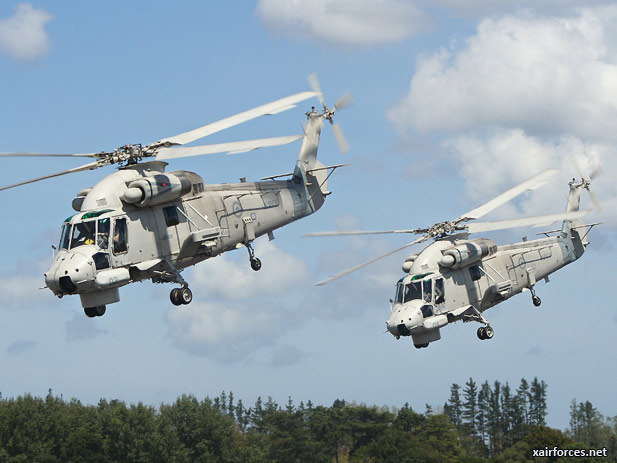
NZ Building Crew To Fly New Seasprites

The recent announcement that New Zealand is to acquire more Seasprite helicopters will expand naval operational capabilities but finding the personnel to maintain and operate them remains a problem.
New Zealand’s Defence Minister Jonathan Coleman said that eight operational Seasprites (plus two spare airframes) will be purchased from Kaman Aerospace in a NZ 242 million dollar (US $204 million) deal.
The purchase price includes NZ 147 million dollars for the airframes. Remaining project costs are reportedly for anti-ship missiles, a full-motion flight simulator, ship decklock modifications, additional components, testing and introduction into service activities.
The Navy had 2,162 regular force personnel at the beginning of 2010 but only 1,884 at present. Fewer than half the personnel of 6 Squadron Royal New Zealand Air Force, which fly the Seasprite, are there by choice, the rest are posted in, according to a recent Ministry of Defence evaluation report.
Last year’s NZDF Annual Report noted that in 2012 there was a shortfall in flying hours, with 1,138 hours flown against a target of 1,400 hours.
This variance was attributed to a lack of crew numbers. However, late last year two new crews were reported to have commenced the Seasprite conversion course and helicopters landed on the 279-foot offshore patrol vessels for the first time.
The first three aircraft are due in New Zealand in late 2014 with deliveries completed by 2016. The helicopters are expected to remain in service until 2030.
‘The [NZDF] currently has five Seasprites which … are due for replacement,’ said Coleman. They are operated by 6 Squadron, which consists of both Royal New Zealand Air Force and Navy personnel.
The new upgraded variant, the Seasprite SH-2G(I), will come with updated flight control systems, radar, and sensors. “They also have a modern communications system that allows sensor data to be shared between the helicopter and ship,” said Coleman.
The weapon system also is updated, with the existing Maverick missiles to be replaced by Penguins, with twice the range and a three times larger warhead.
Increasing the fleet from five to eight will allow helicopters to be embarked on the two Anzac-class frigates, as well as both offshore patrol vessels and the multirole ship HMNZS Canterbury, Coleman said.
In 1998 the Navy’s Westland Wasps, in service for more than 30 years, were replaced, temporarily, with SH-2F Seasprites while SH-2G variants were constructed and delivered.
The replacement SH-2G(I) helicopters were originally refurbished (from ex-USN airframes) for the Australian Defence Force and delivered to the ADF in 2005 as “Super Seasprites.”
However, in 2009 the 11-aircraft contract was canceled due to unresolved technical and financial issues and the aircraft were returned to Kaman with only 1,200 flying hours for the entire fleet.
“The replacement Seasprites will have a multiplier effect on the capability of the Navy and what’s more, the price is very good with alternative helicopter replacements costing three times the amount,” said Coleman.
With the existing fleet of five Seasprites only two aircraft are generally available for operations, as one is used for training and the remainder are undergoing maintenance.
Source: By NICK LEE-FRAMPTON, WELLINGTON, NEW ZEALAND — defensenews.com News – 2 May 2013
Photo: The Royal New Zealand Air Force Kaman SH-2G Seasprite helicopters NZ3602 and NZ3604 both Kaman SH-2G Super Seasprite, RNZAF, 03 March 2007. (Photo by ZK-NGJ)
(2.05.2013)
|